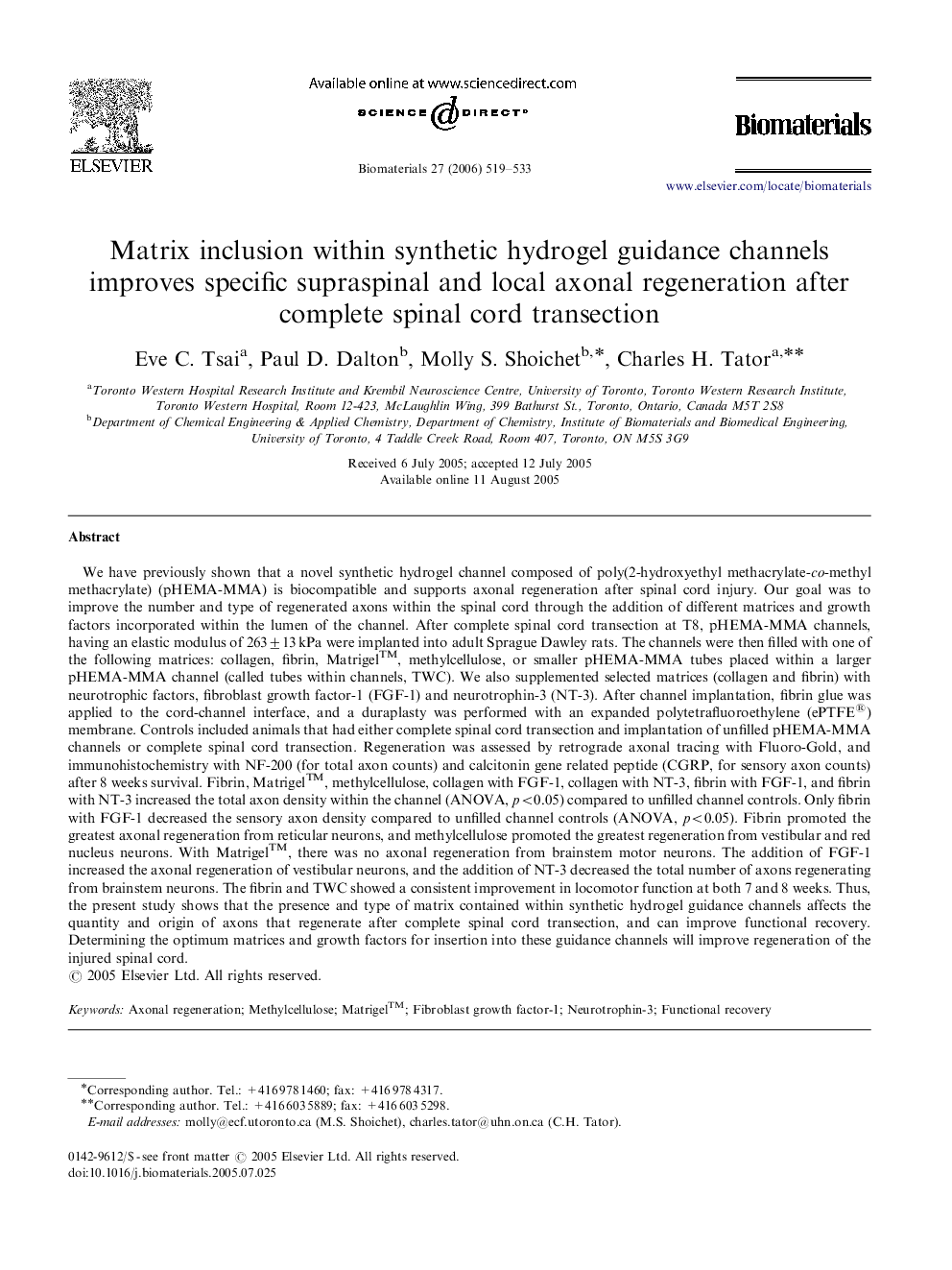| کد مقاله | کد نشریه | سال انتشار | مقاله انگلیسی | نسخه تمام متن |
|---|---|---|---|---|
| 11814 | 759 | 2006 | 15 صفحه PDF | دانلود رایگان |

We have previously shown that a novel synthetic hydrogel channel composed of poly(2-hydroxyethyl methacrylate-co-methyl methacrylate) (pHEMA-MMA) is biocompatible and supports axonal regeneration after spinal cord injury. Our goal was to improve the number and type of regenerated axons within the spinal cord through the addition of different matrices and growth factors incorporated within the lumen of the channel. After complete spinal cord transection at T8, pHEMA-MMA channels, having an elastic modulus of 263±13 kPa were implanted into adult Sprague Dawley rats. The channels were then filled with one of the following matrices: collagen, fibrin, Matrigel™, methylcellulose, or smaller pHEMA-MMA tubes placed within a larger pHEMA-MMA channel (called tubes within channels, TWC). We also supplemented selected matrices (collagen and fibrin) with neurotrophic factors, fibroblast growth factor-1 (FGF-1) and neurotrophin-3 (NT-3). After channel implantation, fibrin glue was applied to the cord-channel interface, and a duraplasty was performed with an expanded polytetrafluoroethylene (ePTFE®) membrane. Controls included animals that had either complete spinal cord transection and implantation of unfilled pHEMA-MMA channels or complete spinal cord transection. Regeneration was assessed by retrograde axonal tracing with Fluoro-Gold, and immunohistochemistry with NF-200 (for total axon counts) and calcitonin gene related peptide (CGRP, for sensory axon counts) after 8 weeks survival. Fibrin, Matrigel™, methylcellulose, collagen with FGF-1, collagen with NT-3, fibrin with FGF-1, and fibrin with NT-3 increased the total axon density within the channel (ANOVA, p<0.05p<0.05) compared to unfilled channel controls. Only fibrin with FGF-1 decreased the sensory axon density compared to unfilled channel controls (ANOVA, p<0.05p<0.05). Fibrin promoted the greatest axonal regeneration from reticular neurons, and methylcellulose promoted the greatest regeneration from vestibular and red nucleus neurons. With Matrigel™, there was no axonal regeneration from brainstem motor neurons. The addition of FGF-1 increased the axonal regeneration of vestibular neurons, and the addition of NT-3 decreased the total number of axons regenerating from brainstem neurons. The fibrin and TWC showed a consistent improvement in locomotor function at both 7 and 8 weeks. Thus, the present study shows that the presence and type of matrix contained within synthetic hydrogel guidance channels affects the quantity and origin of axons that regenerate after complete spinal cord transection, and can improve functional recovery. Determining the optimum matrices and growth factors for insertion into these guidance channels will improve regeneration of the injured spinal cord.
Journal: Biomaterials - Volume 27, Issue 3, January 2006, Pages 519–533